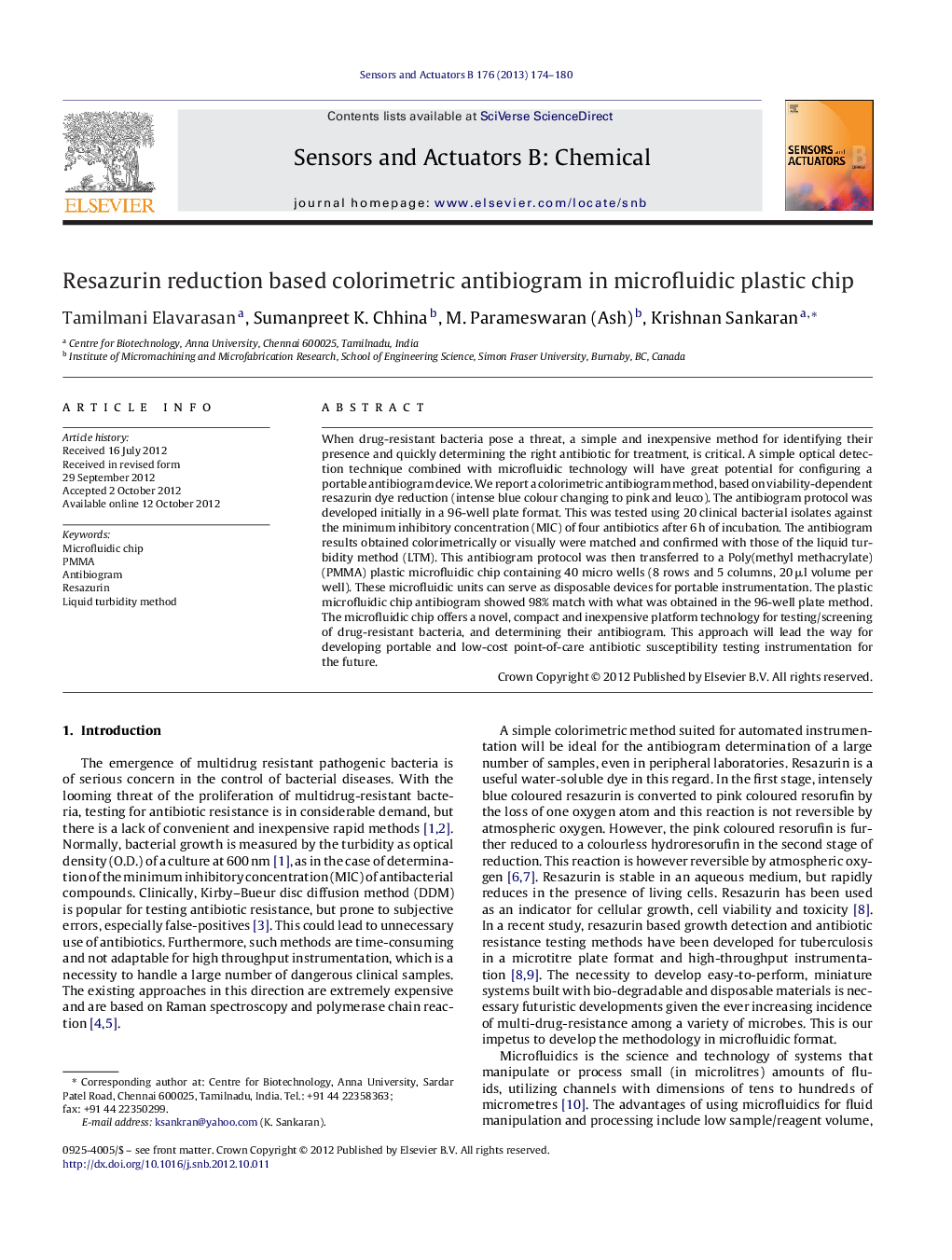| Article ID | Journal | Published Year | Pages | File Type |
|---|---|---|---|---|
| 7148949 | Sensors and Actuators B: Chemical | 2013 | 7 Pages |
Abstract
When drug-resistant bacteria pose a threat, a simple and inexpensive method for identifying their presence and quickly determining the right antibiotic for treatment, is critical. A simple optical detection technique combined with microfluidic technology will have great potential for configuring a portable antibiogram device. We report a colorimetric antibiogram method, based on viability-dependent resazurin dye reduction (intense blue colour changing to pink and leuco). The antibiogram protocol was developed initially in a 96-well plate format. This was tested using 20 clinical bacterial isolates against the minimum inhibitory concentration (MIC) of four antibiotics after 6 h of incubation. The antibiogram results obtained colorimetrically or visually were matched and confirmed with those of the liquid turbidity method (LTM). This antibiogram protocol was then transferred to a Poly(methyl methacrylate) (PMMA) plastic microfluidic chip containing 40 micro wells (8 rows and 5 columns, 20 μl volume per well). These microfluidic units can serve as disposable devices for portable instrumentation. The plastic microfluidic chip antibiogram showed 98% match with what was obtained in the 96-well plate method. The microfluidic chip offers a novel, compact and inexpensive platform technology for testing/screening of drug-resistant bacteria, and determining their antibiogram. This approach will lead the way for developing portable and low-cost point-of-care antibiotic susceptibility testing instrumentation for the future.
Related Topics
Physical Sciences and Engineering
Chemistry
Analytical Chemistry
Authors
Tamilmani Elavarasan, Sumanpreet K. Chhina, M. Parameswaran (Ash), Krishnan Sankaran,
